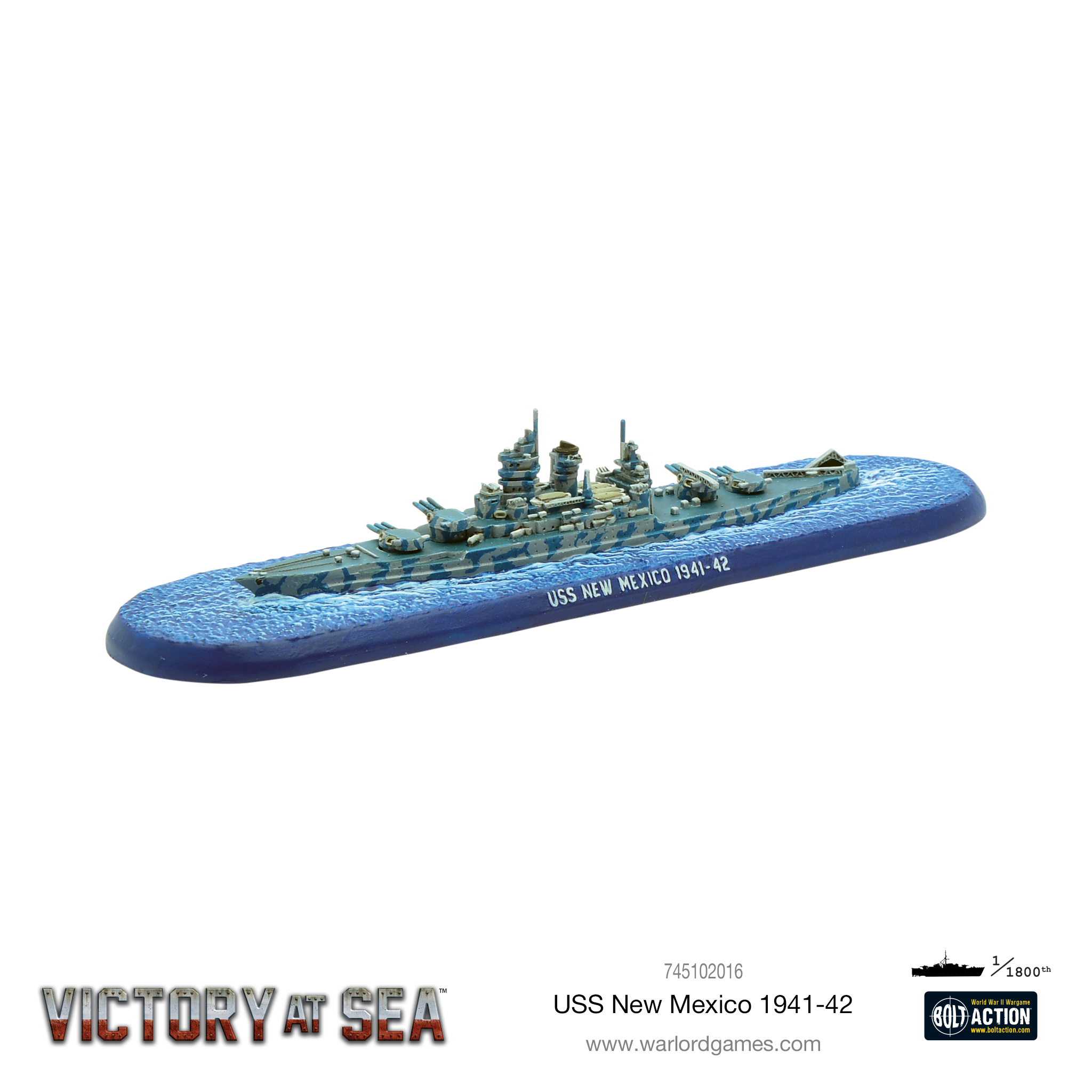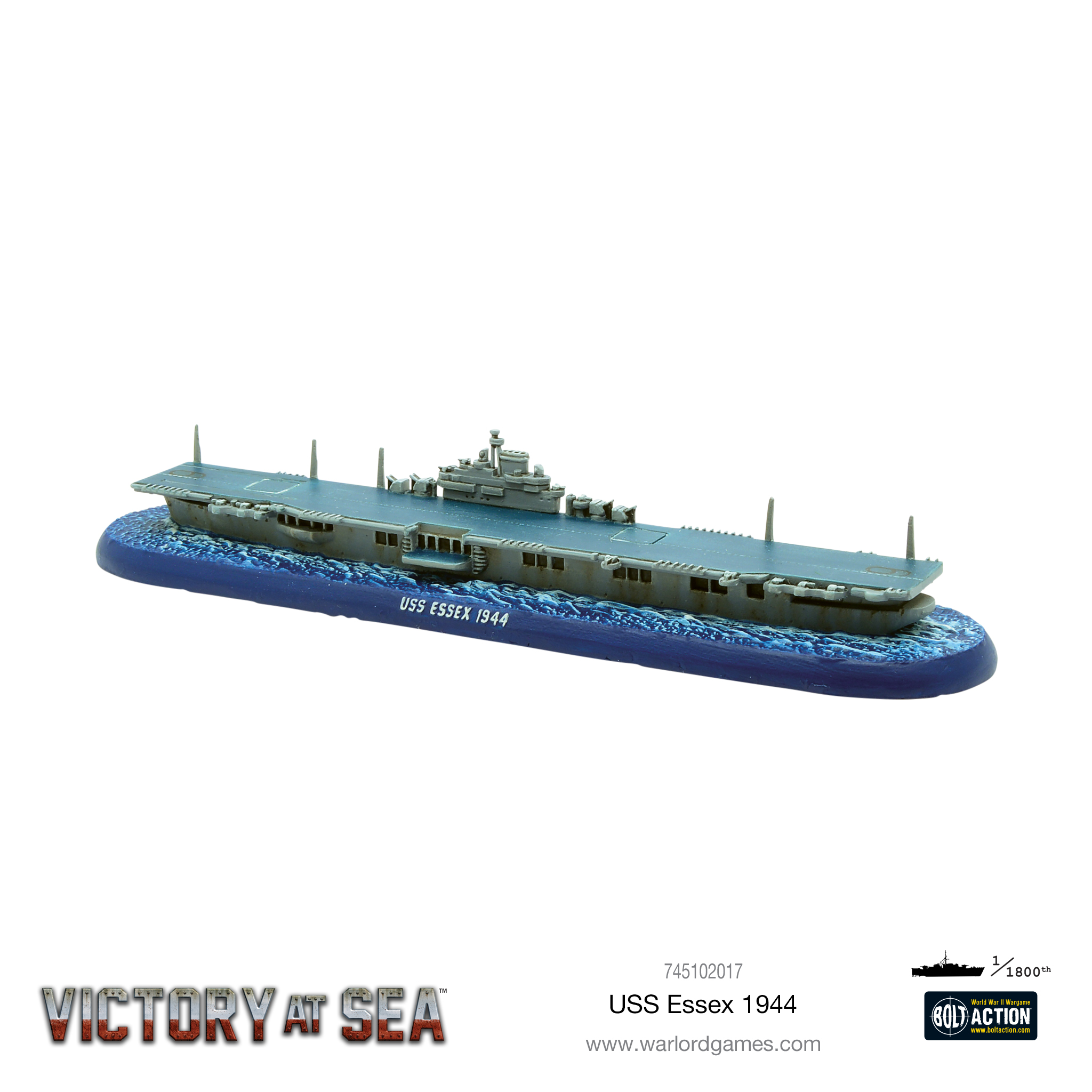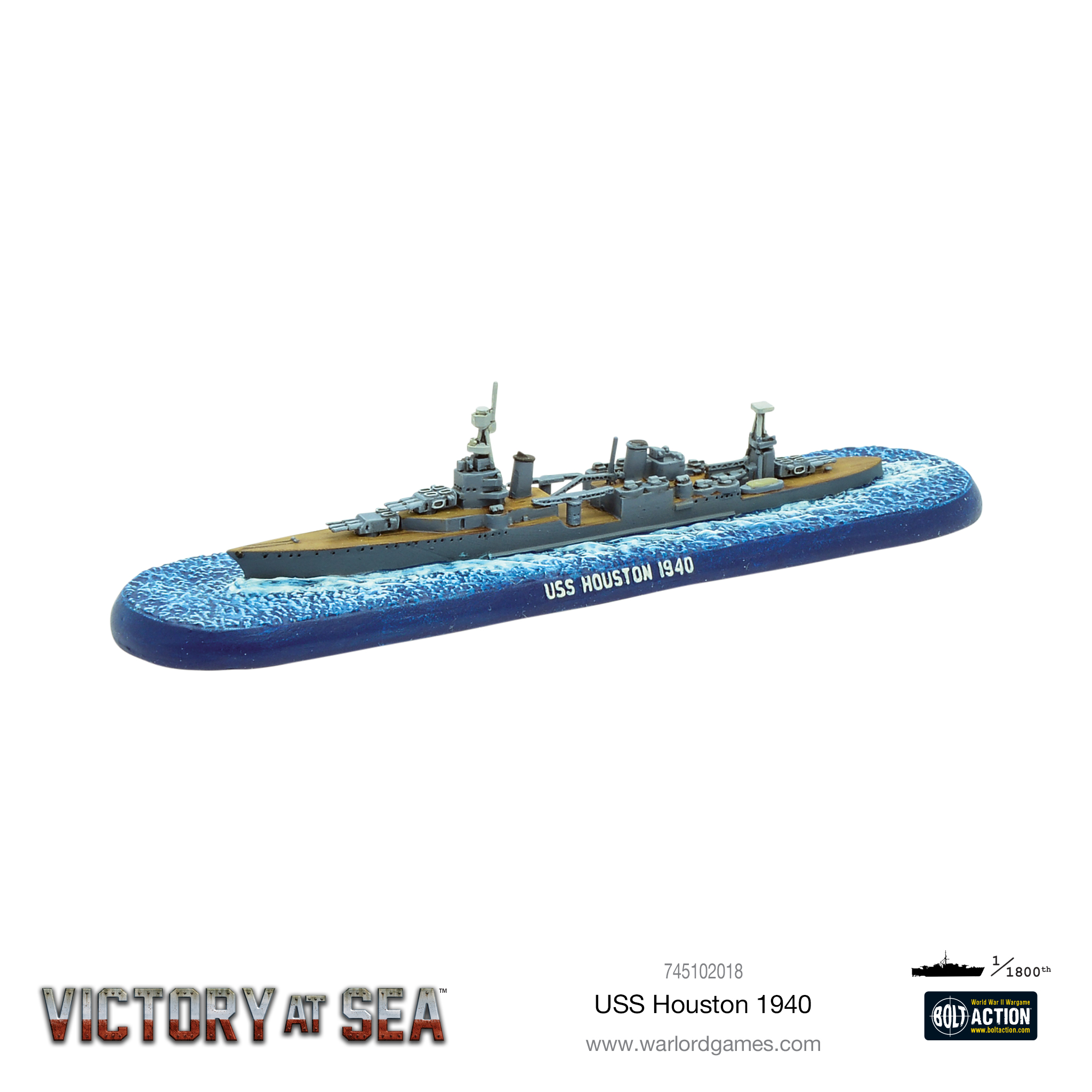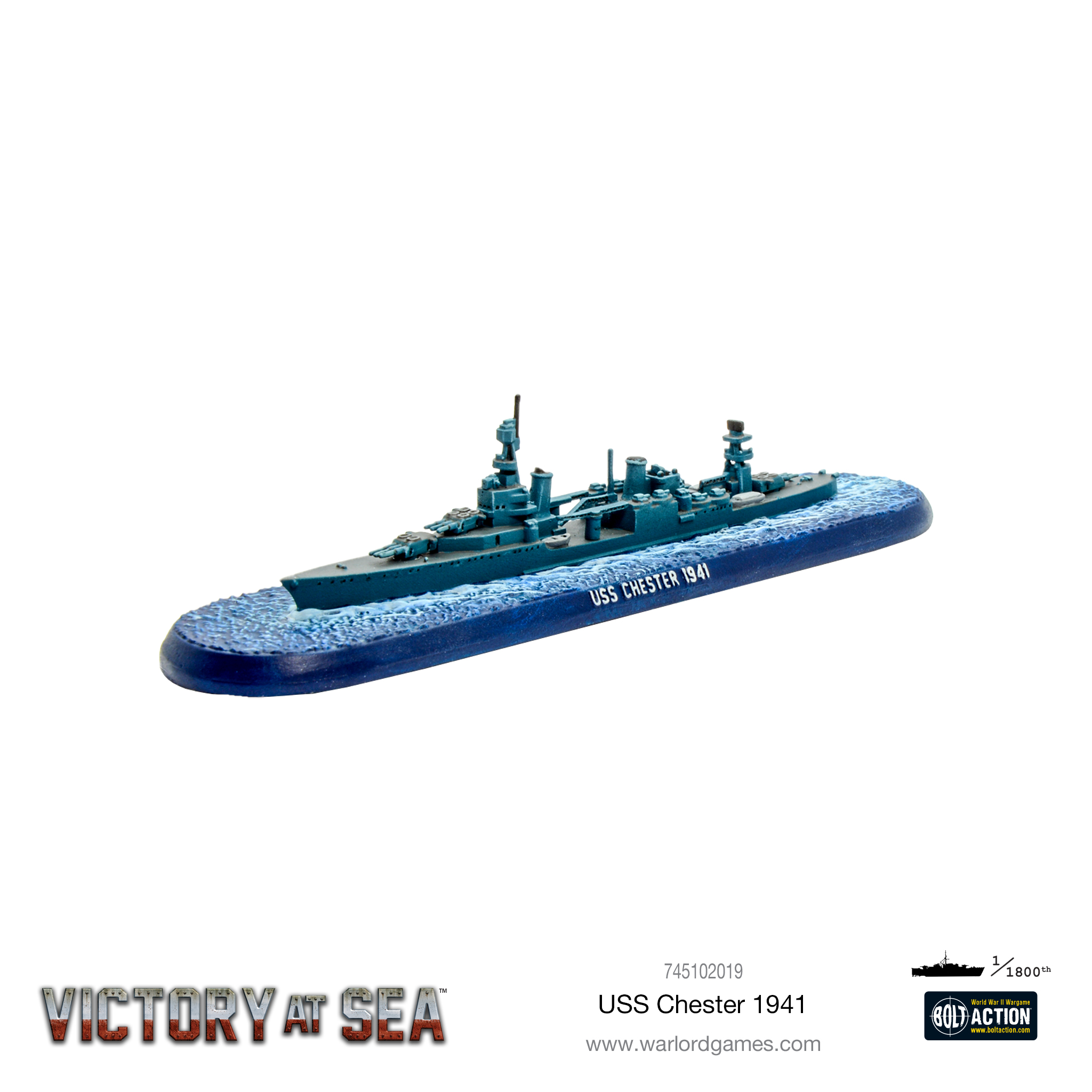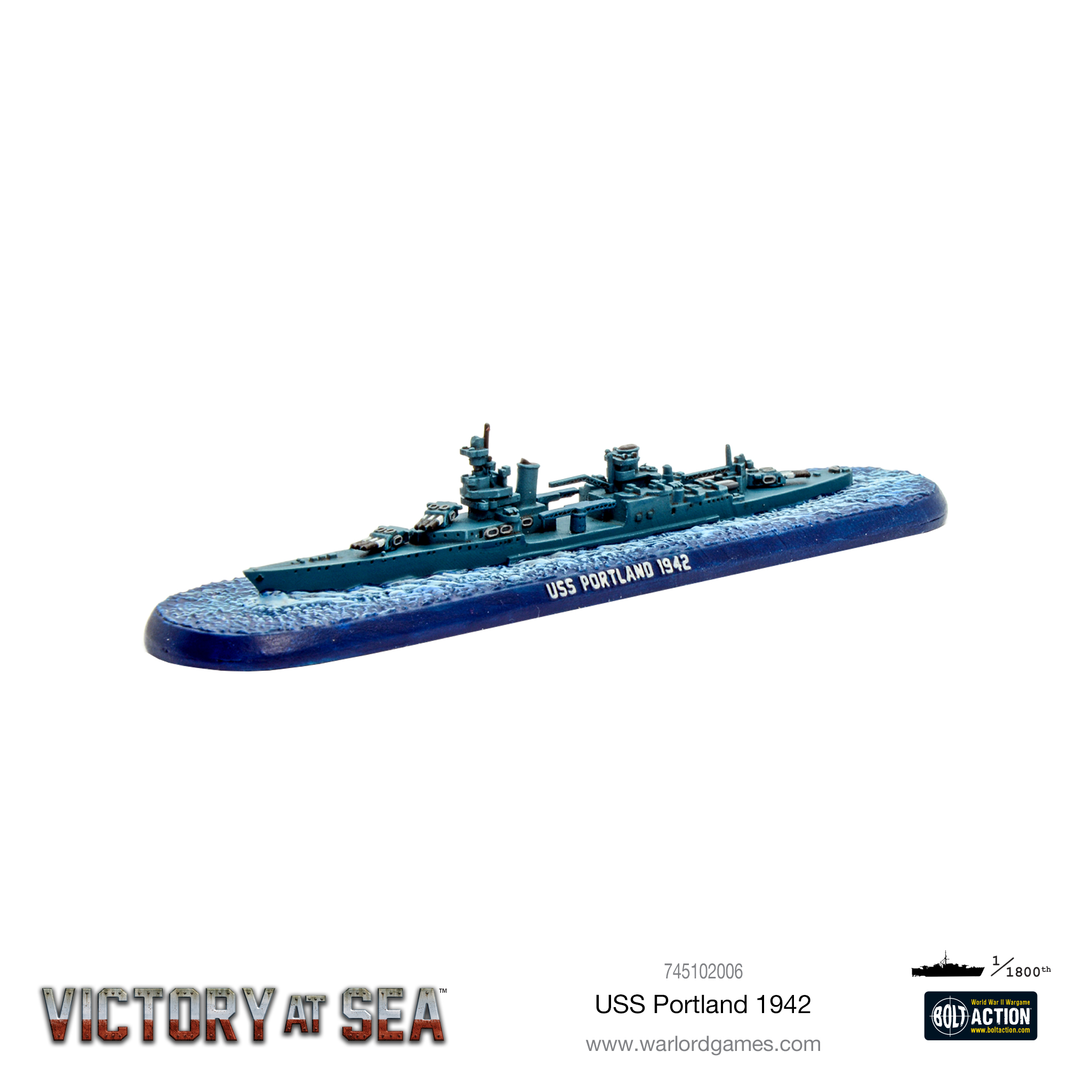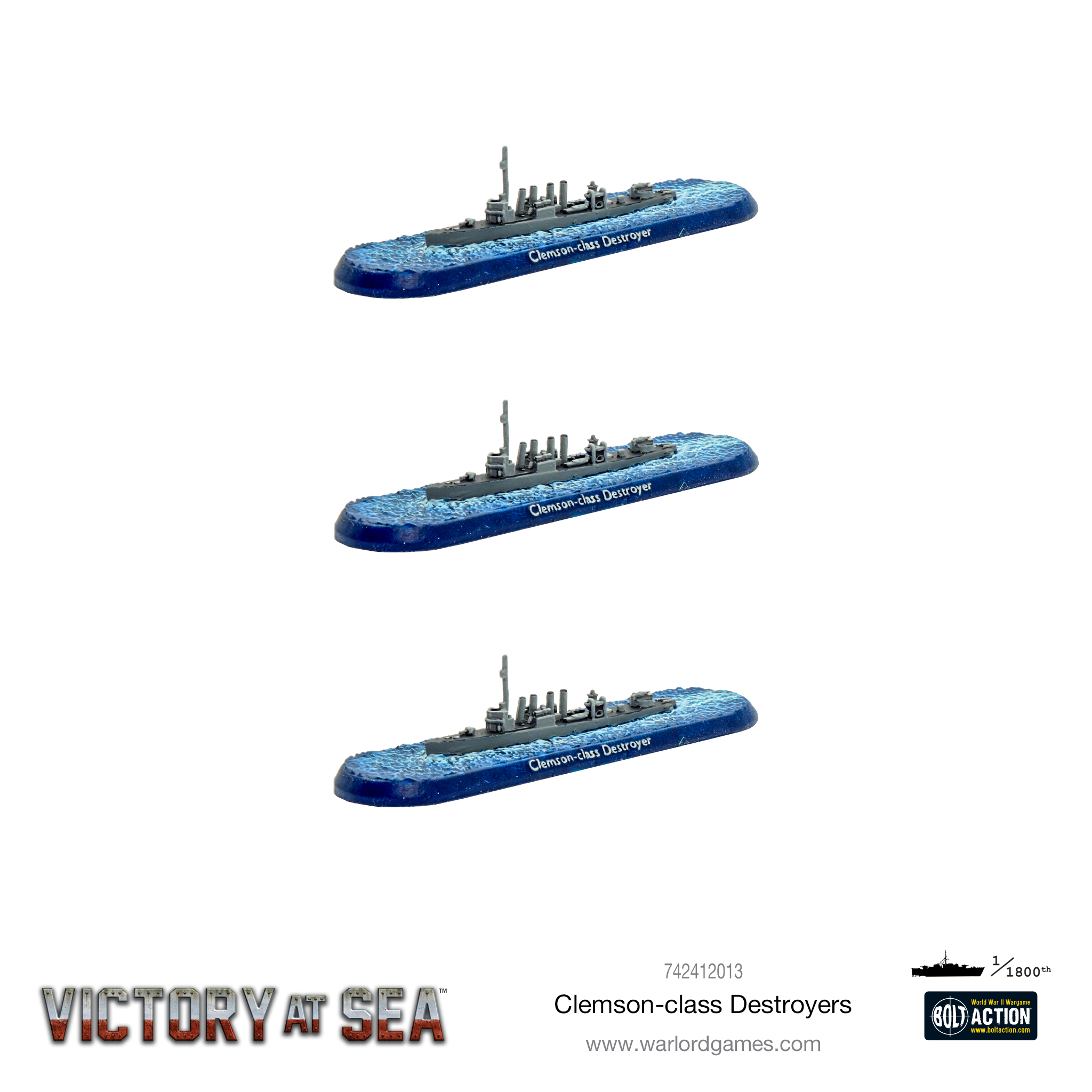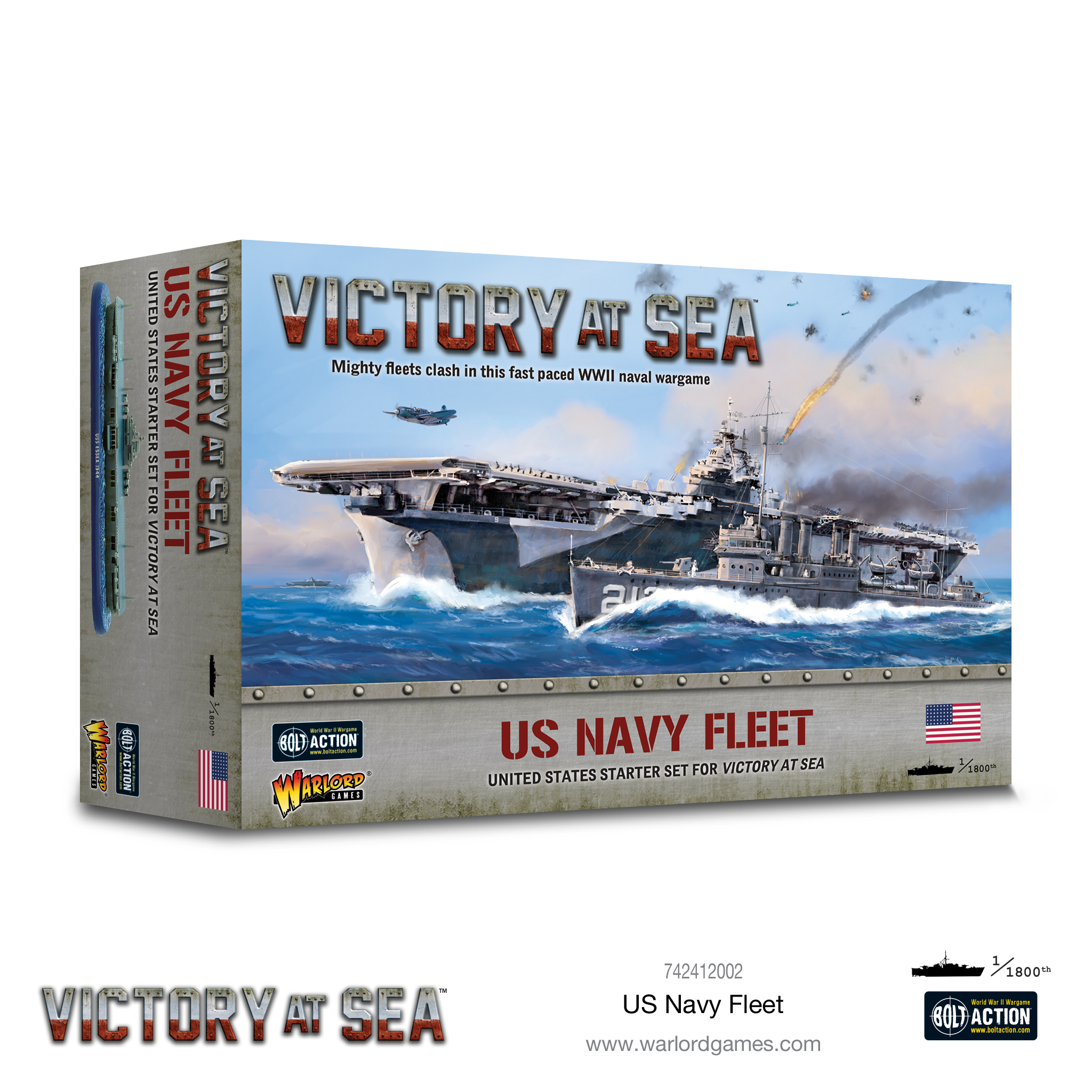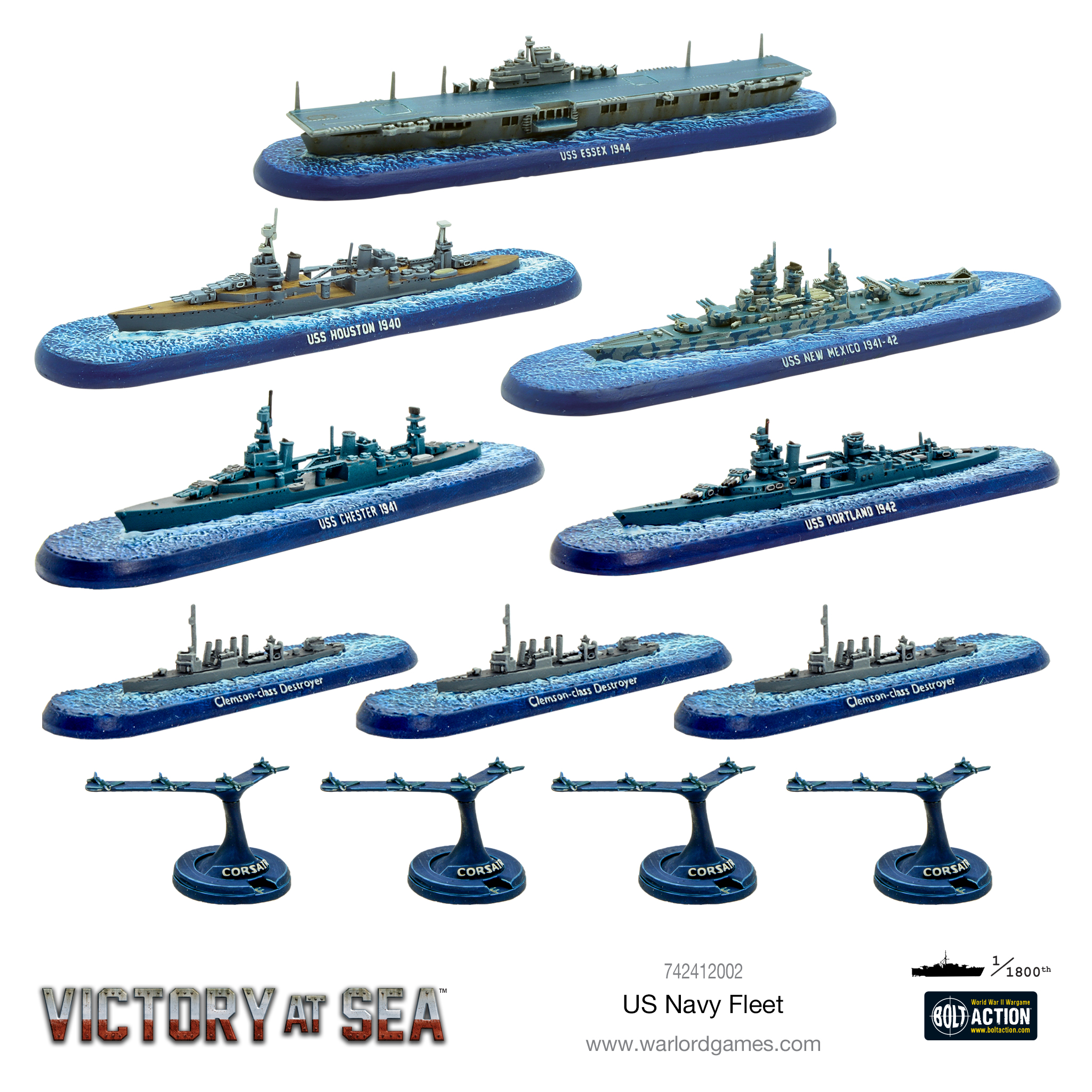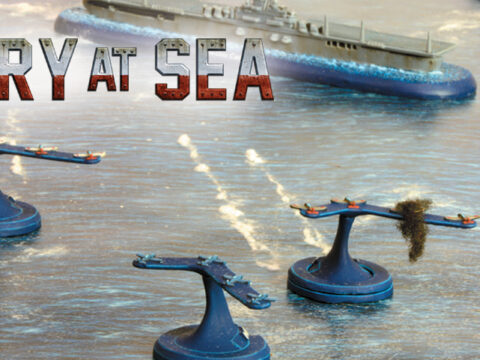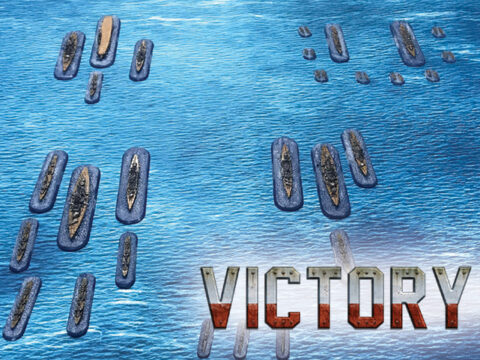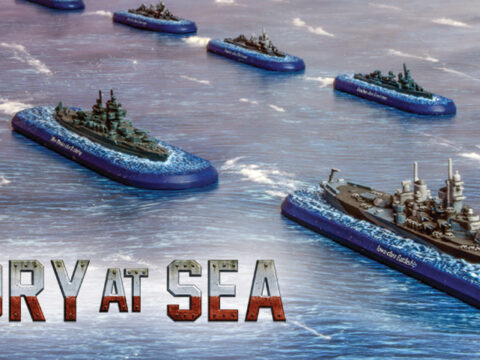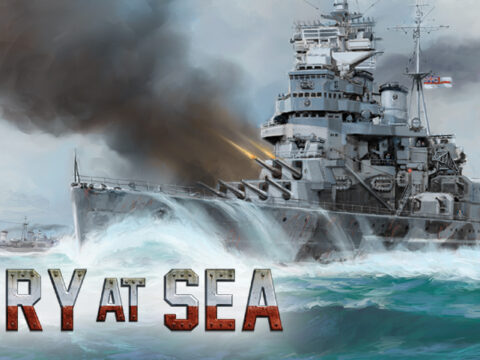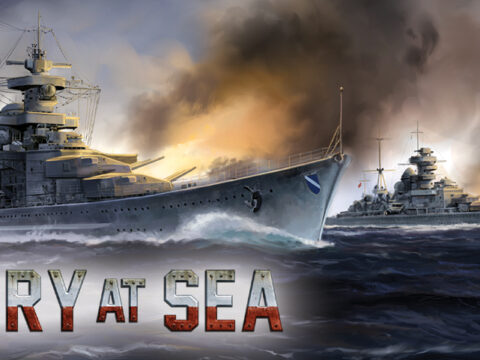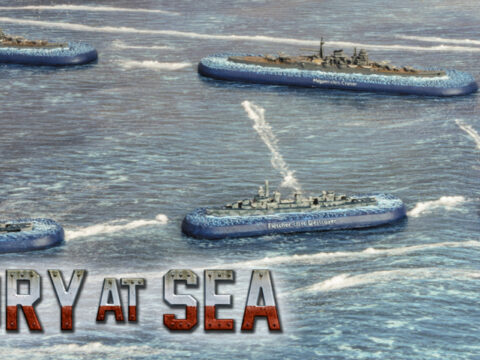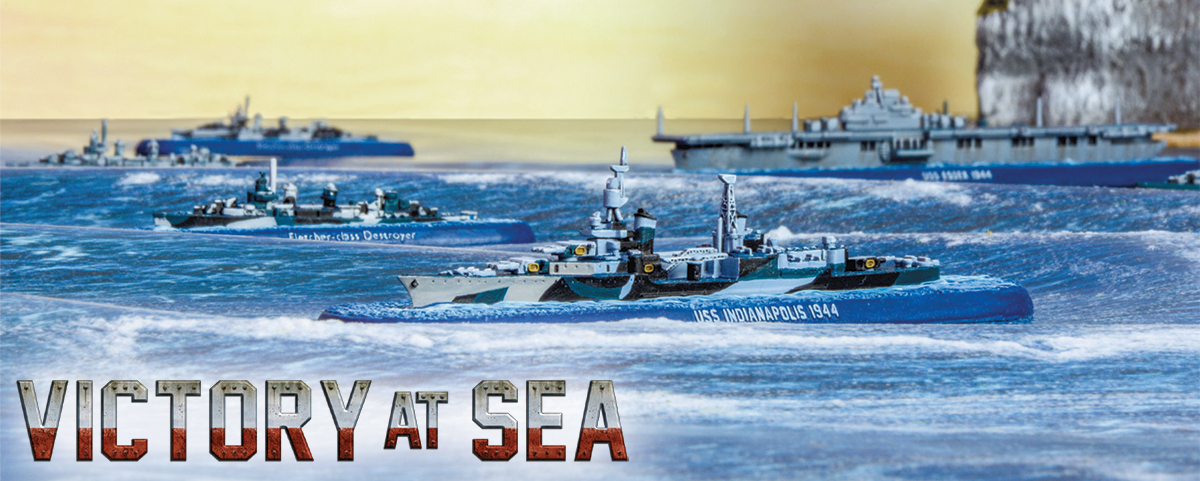
Although the United States of America contains a vast area of land, almost all of its allies and trading partners are overseas, and those interests require a powerful navy to support them.
The US Navy possessed some of the largest and most modern battleships in the world at the outbreak of World War Two, and despite losses during the Japanese attack on Pearl Harbor, was able to maintain a powerful presence in the Pacific. However, in the vast reaches of that ocean the battleship was no longer the king of battle. It was fortunate for the Americans that the handful of aircraft carriers then in service with the US Navy escaped destruction; given later events it is doubtful that a pure battleship force could have defeated the Imperial Japanese Navy.
The aircraft carrier became the main US naval asset during the war in the Pacific, which was very much a conflict between the air assets of opposing fleets. US carrier forces were hard-pressed early on but as the industrial might of the US was brought to bear, new carriers and air groups for them were deployed in such numbers that the enemy simply could not match their strength.
US naval forces were primarily engaged in the Pacific, but some capital ships and larger numbers of destroyers were deployed to the Atlantic theatre where their primary opponents were German U-boats.
New Mexico-class Battleship – USS New Mexico 1941-42
USS New Mexico (BB-40) was the lead of her class of battleship and served with the United States Navy between 1918 and 1946. She was the first ship with a turbo-electric transmission, capable of a cruising speed of 10 knots. She served as an escort to President Woodrow Wilson’s voyage to Brest, France, for the signing of the Treaty of Versailles. She operated repeated exercises in Pacific and Atlantic waters in the interwar period and received major modernisation between 1931 and 1933.
Initially, in World War II, the vessel was involved in neutrality operations in the Atlantic. This soon changed after the attack on Peral Harbor. She returned to the Atlantic and participated in shore bombardments including at Attu and Kiska, Tarawa, the Marshall Islands, the Mariana and Palau Islands Leyte, Luzon and Okinawa. She also performed escort duties, patrols and received refits during this period. USS New Mexico was subject to repeated kamikaze attacks during her WW2 service, which inflicted heavy damage and loss of life. However, she persevered and was present in Tokyo Bay for the Japanese surrender that officially ended the war.
Essex class Carrier – USS Essex 1944
Built during World War Two, USS Essex was the lead of her class of aircraft carriers. She was commissioned in December 1942 and went on to serve in several campaigns in the Pacific Theatre of operations. For her efforts, she received the Presidential Unit Citation and 13 battle stars. She operated right until the finale of the war, participating in the final raids against the Japanese home islands between 10 July to 15 August 1945.
Though already moderately armed, the primary offensive capability of a carrier was, of course, its aircraft, known as “Sunday Punch”. This comprised up to 36 fighters, 36 dive bombers and 18 torpedo bombers. Typically, the standard fighter would be the Grumman F6F Hellcat, the dive-bomber/scout the Curtiss SB2C Helldiver and the torpedo bomber the Grumman TBF Avenger as the torpedo bomber.
At the close of the war, Essex was decommissioned but modernized and recommissioned in the 1950s, serving as an anti-Submarine carrier. During this time, she participated in the Korean War and was key in the Cuban Missile Crisis. She also has the distinction of being the primary recovery carrier for the Apollo 7 space mission.
Northampton-class Cruiser – USS Houston 1940
Originally conceived as a light cruiser, USS Houston (second of her name) was reclassified as a heavy cruiser early in her life, serving in the 1930s to protect American interest in the China-Japan war of 1931 and later transporting President Roosevelt on special ‘cruises’.
On the night of the Pearl Harbour attack, Houston departed Panay Island for Australia joining the American-British-Dutch-Australian naval force at Surabaya. She participated in the Battle of Makassar Strait, shooting don four Japanese aircraft. Thereafter she was part of the Timor Convoy, shooting down 7 out of 44 aircraft in the second of two attacks. As a result, she was absent from the attack on Darwin of 19 February 1942.
Her next major action was at the Battle of the Java Sea, the largest surface engagement since the Battle of Jutland in World War One. 5 cruisers and 10 destroyers of the Allies met a Japanese force of 4 cruisers and 13 destroyers on 27 February 1942. The ABDA naval force lost 2 cruisers and 3 destroyers.
It was the at the Battle of Sundra Strait that Houston would meet her eventual fate, in which she and HMAS Perth were sunk by torpedoes from a destroyer squadron. The route had been thought free of enemy vessels, but this proved false with the two ships surrounded by multiple Japanese Warships. The story of her demise was not known fully until the liberation of the 368 survivors of Houston, from Japanese prison camps at the close of war.
Northampton-class Cruiser – USS Chester 1941
USS Chester supported the landing on Samoa (18-24 January 1942), and after repairs joined TF 17 for the Guadalcanal-Tulagi raid, the attack on Misima Island and the Battle of the Coral Sea, defending the carriers with anti-aircraft fire.
She thereafter provided fire support at Tarawa, the lead ship of the operation, and covered other landings in the Island-Hopping campaign of the USMC. Later in the war, she conducted patrols off Okinawa and was assigned to the force providing air cover for the Coats Striking Group off the Yangtze River Delta.
Surviving the war, she embarked homeward-bound troops at Iwo Jima and sailed for San Francisco. One final voyage to Guam brought home further servicemen. She arrived at Philadelphia on 30 January 1946, and later that year was placed out of commission in reserve.
Portland-class Cruiser – USS Portland 1942
USS Portland, the lead ship of the Portland class of cruiser, launched in 1932. She completed a number of training and goodwill cruises in the interwar period before seeing extensive service during World War II. Her first wartime action was at the Battle of the Coral Sea in 1942, escorting the carrier Yorktown and rescuing survivors from the carrier Lexington. She repeated this escort assignment for Yorktown for the Battle of Midway.
For the Guadalcanal campaign, she initially supported the carrier Enterprise, but was torpedoed and put out of action for 6 months during the Naval Battle of Guadalcanal. IN mid-1943, she returned to combat – performing shore bombardment s at the Aleutian Islands, Gilbert and Marshall Islands, Mariana Islands and New Guinea. She was at the Battle of Leyte Gulf in October 1944, engaging Japanese vessels at Surigao Strait. In 1945 she supported landings during the Battle of Okinawa until the close of the war.
Clemson-class destroyers
The Clemson-class was a redesign of the Wickes-class and was the last pre- World War Two class of flush-decker destroyers to be built for the United States. In all, 156 of these destroyers served with the US Navy from after World War One and on into World War Two.
US Navy Starter Fleet Box
The vessels detailed above can all be found in the United States Navy Starter Box for Victory at Sea, along with F4-U Corsair aircraft flights. Full contents:
Full Contents:
- New Mexico-class Battleship – USS New Mexico 1941-42
- Essex class Carrier – USS Essex 1944
- Northampton-class Cruiser – USS Houston 1940
- Northampton -class Cruiser – USS Chester 1941
- Portland-class Cruiser – USS Portland 1942
- Clemson-class Destroyer x3
- Fighter Bomber Aircraft – F4-U Corsair x4 flights
- Ship Cards and Damage Sliders
- Assembly Instructions

